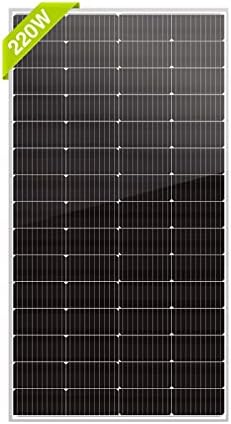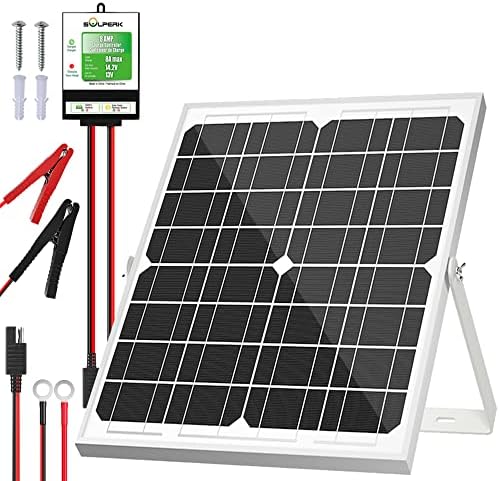# Shining a Light on Solar: How Communities Are Embracing Renewable Energy
On a sun-soaked Saturday afternoon, I stood at the center of my small, off-grid community, surrounded by neighbors and friends. The laughter of children and the rustle of trees set the scene as we all gathered for our monthly “Solar Sunday.” This wasn’t just any ordinary gathering; it was a celebration of our journey toward renewable energy and the powerful connection we shared as advocates of sustainability. From homemade solar ovens to stories of energy savings, we exchanged ideas and inspiration. What struck me most was how, together, we were not just creating individually sustainable homes but a thriving, self-sufficient community.
Communities around the world are stepping into the spotlight to harness the power of solar energy, transforming sunlight into a formidable tool for sustainability. With solar technology evolving at an unprecedented rate, individuals and municipalities alike are recognizing its potential to energize not only homes but entire communities. Here’s an exploration of how communities are adopting solar energy, reaping both environmental and economic benefits, and tips for anyone looking to adopt this bright energy solution.
## Embracing Solar Energy: A Community Perspective
The shift towards solar energy is evident in towns and cities across America. When local governments initiate solar programs, the ripple effect can be profound. Community solar gardens have become particularly popular; these installations allow residents to invest in shared solar panels, enabling those unable to install panels on their rooftops—like renters or those with shaded homes—to benefit from solar energy. By pooling resources, communities can access cleaner energy, lower their bills, and enhance local job markets in the renewable sector.
### The Economic Angle: Dollars and Sense
The economic implications of adopting solar energy are substantial. On a community level, residents can see a significant reduction in their energy bills once solar systems are installed. Moreover, many states offer tax incentives and rebates for solar installations, making it even more financially appealing. Besides, there’s the job market aspect. Renewable energy jobs are on the rise, often creating positions in installation, maintenance, and energy consulting. By fostering local solar initiatives, communities are injecting energy into the local economy and providing livelihoods for residents.
#### A Closer Look at the Solar Co-op Model
One emerging trend is forming solar co-ops—groups of residents coming together to leverage collective buying power. By pooling resources, these co-ops can negotiate better deals with solar providers, driving costs down even further. Participants in these programs not only save money but also build a sense of camaraderie among neighbors. It’s about harnessing the sun’s energy and the community spirit.
## Solar Technology: Innovations Lighting the Way
The technological advancements in solar energy have made it increasingly accessible and efficient. From bifacial panels that capture sunlight on both sides to solar shingles that seamlessly integrate with your roof, the options are bountiful. Furthermore, innovations such as solar batteries allow excess energy generated during the day to be stored for use at night, significantly enhancing the practicality of solar energy.
### Community-Driven Projects
Across various communities, innovative projects are popping up. One noteworthy initiative is the “Solarize” campaigns, which aim to educate and motivate residents to switch to solar. By providing workshops and easy access to information, these campaigns demystify the process and encourage participation, making solar energy a reality for many.
#### The Impact of Non-Profit Organizations
Non-profits are also playing a crucial role in this movement, often focusing on providing solar solutions to low-income families. Programs like Energy Democracy collaborate with communities to make renewable energy affordable and accessible, ensuring that everyone can benefit from the sun’s rays.
## Stories of Success
Success stories abound when it comes to communities embracing solar energy. Take the example of Lancaster, California, which became a model city for solar energy usage in the United States. They partnered with local businesses and organizations, resulting in over 90 megawatts of installed solar capacity. This translates to thousands of homes powered through renewable energy, dramatically reducing their carbon footprint.
Another inspiring narrative comes from the small town of Greensburg, Kansas. After being devastated by a tornado in 2007, the community decided to rebuild with sustainability in mind, becoming the first city in the United States to be powered entirely by renewable energy. The result? A vibrant, resilient community thriving under the sun.
## Practical Pro Tips for Going Solar
1. **Research Local Incentives**: Before diving in, investigate the federal, state, and local incentives available to you. Tax credits and rebates can significantly reduce the cost of your solar installation.
2. **Consider Community Solar**: If installing solar panels at home isn’t feasible, explore community solar programs. These allow you to buy into a larger solar installation, benefiting from shared energy without personal panel installation.
3. **Choose the Right Size**: Assess your energy needs carefully. A system that’s too big may lead to unnecessary costs, while a system that’s too small won’t meet your energy requirements.
4. **Look for Local Installers**: Supporting local businesses not only helps your local economy but often results in better service and tailored solutions based on your community’s specific needs.
5. **Engage with Your Neighbors**: Hosting informational meetings with neighbors can spark interest in solar ideas, facilitate group purchasing deals, and cultivate a communal commitment to renewable energy.
6. **Stay Informed on Technology Trends**: The solar industry is rapidly changing. Keep an eye on emerging technologies, battery storage solutions, and financing options to make the best decisions for your situation.
## Community Challenges and Considerations
While the benefits of solar energy are clear, challenges do arise. For instance, financing can be a barrier, especially for low-income households. Moreover, zoning laws and regulations may hinder installation efforts in certain regions. Community organizers can play a pivotal role in addressing these challenges by advocating for fair policies and creating educational programs that demystify solar technology.
### The Future of Solar Communities
Looking ahead, the prospect of community solar initiatives is bright. With climate change at the forefront of global discussions, communities are recognizing the urgent need to shift towards sustainable and renewable resources. The transition to solar energy also aligns with broader environmental goals, such as the reduction of greenhouse gas emissions and the conservation of natural resources.
Moreover, as technology continues to evolve, so will public interest and participation in solar energy. Increased efficiencies, lower costs, and new financing methods make solar solutions more accessible than ever. As this trend grows, we can expect enhanced collaboration among neighbors, businesses, and local governments, paving the way for a brighter, greener future.
## Conclusion: The Brilliance of Solar Community
Solar energy isn’t just about harnessing light for power; it’s about illuminating the path toward a sustainable future. Communities embracing renewable energy are doing more than reducing their carbon footprints; they are fostering collaboration, stimulating economic growth, and creating resilient neighborhoods.
So, whether you’re already a solar champion or just contemplating your first steps into this vibrant world of renewable energy, remember: every sunbeam counts. Together, let’s shine a light on solar, inspiring action in our neighborhoods and beyond.
As communities embrace the warmth of the sun’s energy, we witness a remarkable shift toward resilience and sustainability, reminding us that the power of transformation lies in our hands—lit brightly by the sun.



